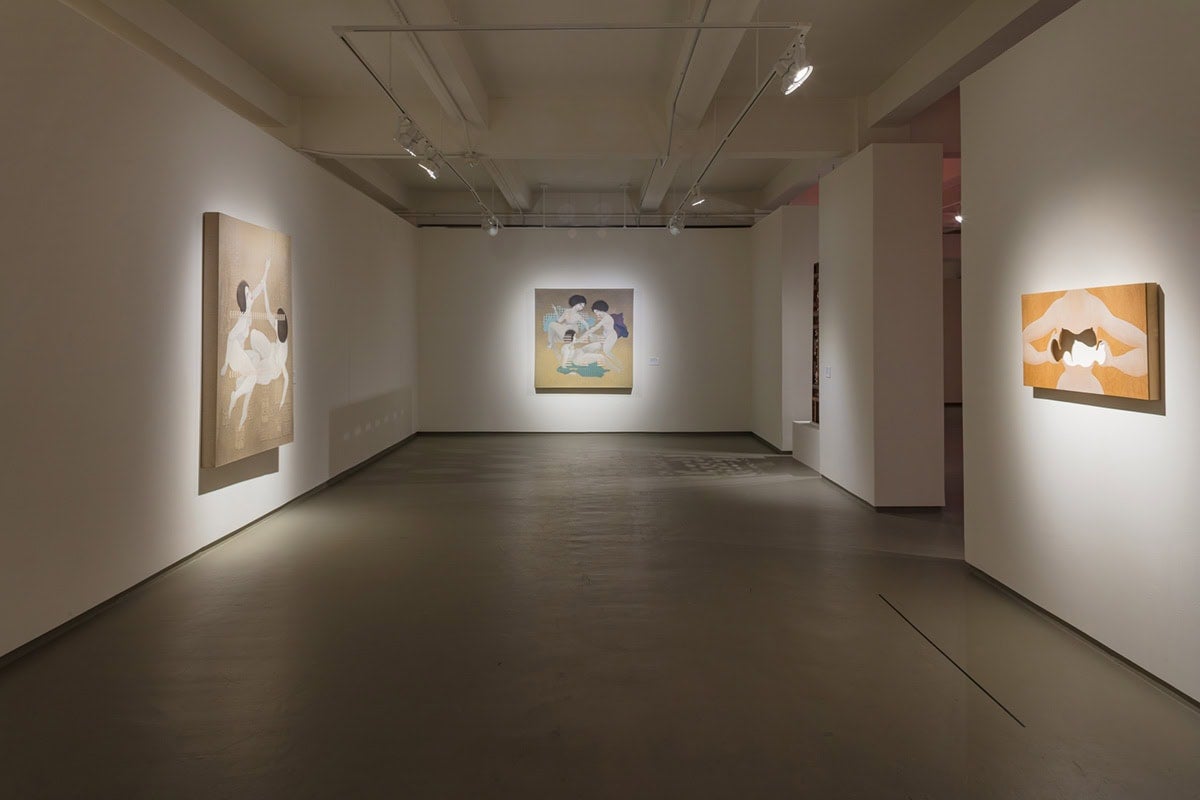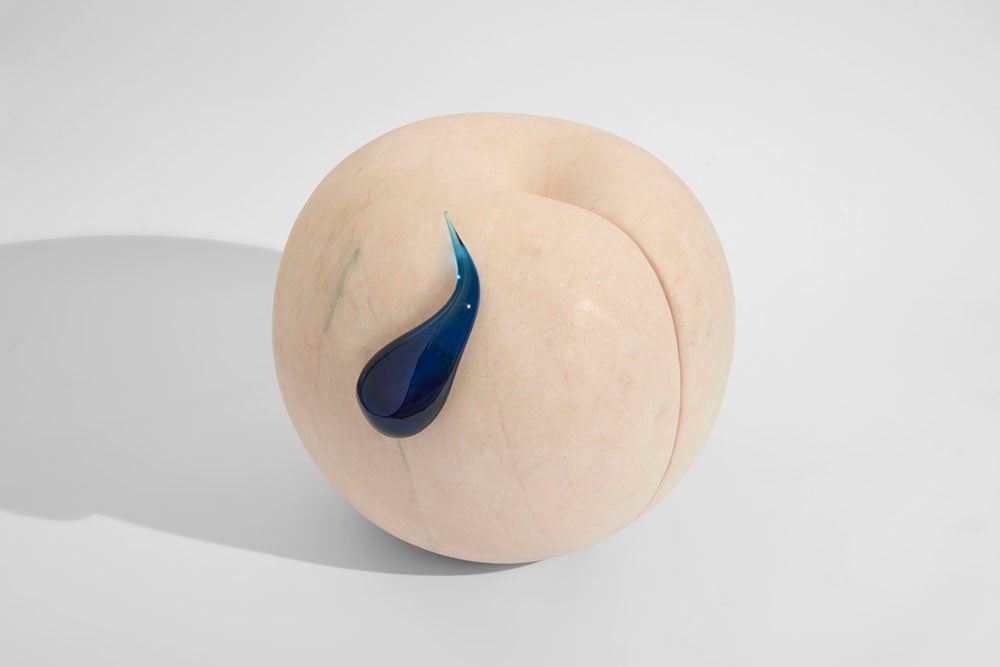
In 1906, German modernist Paula Modersohn-Becker painted Self-Portrait with Amber Necklace, Self-Portrait on the 6th Wedding Anniversary, and other nude self-portraits. Art historians consider these paintings as radical acts of feminism, being the first known female nude self-portraits in Western art history.[1]
Over a hundred years later, female-identified artists continue to depict the female figure across a wide array of mediums, in an effort to continue tipping the scales that remain imbalanced. By doing so, they add weight, significance, and personal intimacy to misunderstood cultures and identity positions, and they reflect incremental changes in socio-political narratives. Currently, the Museum of Contemporary Art Jacksonville, features work by artists Frances Goodman, Jenna Gribbon, Hayv Kahraman, Tschabalala Self, Diana Al-Hadid, Karen Lamonte, and Nevine Mahmoud in the exhibition Romancing the Mirror (December 4, 2020 – June 20, 2021) curated by Ylva Rouse. Using a range of media—glass, marble, walnut, sequins, fabric, and paint, among others—these artists pursue deep, heterogeneous, and idiosyncratic expressions of their lived experiences.
Unlike Paula Modersohn-Becker’s nude self-portraits, that were revolutionary at the time, this exhibition feels somewhat reductive in its framing of artists within binary terms of gender. The curatorial statement settles on this dichotomy by stating that the female sense of self views the world “through an antiheroic, vulnerable, and often playful lens.”[2] These terms perpetuate a stigma by reinforcing assumptions that art made by women is less serious and important than the majority-male art historical canon, when in reality, the artists in the exhibition unconditionally hold space and power in the contemporary art world. They range in age from early 30s to early 50s, and the depictions of figures in the exhibition reflect this developmental range. Together, they challenge the warped expectation that female figuration must conform to displays of youth, frivolity, and beauty. This centers the exhibition, omitting potential outliers of extreme youth or advanced age, giving a focus to the representational, abstract and anthropomorphized portrayals of the human form. The artists also represent diverse ethnicities and cultural backgrounds, sexual identities, lived experiences, and forms of expression. However, the curatorial statement provided in the exhibition wall text and online, relies on qualifying labels such as “female artists,” positioning them within a traditionally “othered” category. An all-women exhibition might have felt more radical and relevant if a wider expression of female gender identities had been included or if the work moved beyond the female body as subject.

As for the artwork itself, there are many strengths to celebrate. In Diana Al-Hadid’s Woven Woman, densely layered materials abstractly conjure a human form while lacy pockets of negative space create an atmosphere for the subject matter. In Al-Hadid’s work, the rendered parts of the form are as significant as the absent ones.Nearby, Nocturne 1, Karen LaMonte’s impressive translucent cast glass work emulates the wet drapery of classical and Hellenistic sculpture, suggesting the contours of a disguised body. There is a bold sense of physicality created by the relationship between the outward material of the glass dress and the inner, hollow void of the body. Triple Swell and Perfect Orifice, suggestive marble, glass, and acrylic sculptures by Nevine Mahmoud present objects that imply intersexuality (as peaches are often coded in a pop culture context to represent a non-gendered sexual orifice). Yet, they become female by proxy. Intimacy is suggested by the laborious efforts of sculpting the marble for these forms. The confident humor creates a compelling sense of juxtaposition embodied in these works. Jenna Gribbon’s candid paintings are like snapshots of memories depicting wrestlers, café goers, swimmers, explorers, and intimate close-ups. Frances Goodman’s work embodies a contradiction of time and energy. Goodman’s meticulous hand-sewn sequined images take dedicated time and physical energy, yet they depict female tropes, languid figures, frozen in time.
A mirror often signifies self-discovery, awareness, and wisdom. As both a window into the self and a reflection of it, a mirror is simultaneously intimate and public. By adding romance to the title of the exhibition, it seems to trivialize the artists, linking a sense of obsession and narcissism with languid pondering. Conversely, the work in this exhibition has agency and resilience. Despite the implications of the curatorial statement, framework of the exhibition, and title, Ylva Rouse has brought together powerful works and designed compelling relationships between the physicality, materiality, conceptual interests, subject matter, and emotional tone of the artworks. As we round a year amid a pandemic, social distancing, isolation, and significant loss, a mirror provides a reflection. With reflection we unlock the ultimate access to change and progress. Ultimately, we need to see beyond ourselves.
Romancing the Mirror is on view at the Museum of Contemporary Art in Jacksonville, Florida through June 20, 2021.
[1] John.Colapinto, “Paula Modersohn-Becker: Modern Painting’s Missing Piece,” The New Yorker. accessed April 12, 2021, https://www.newyorker.com/books/page-turner/paula-modersohn-becker-modern-paintings-missing-piece.
[2] Wall text, Romancing the Mirror, Museum of Contemporary Art Jacksonville, April 12, 2021. https://nyc3.digitaloceanspaces.com/360viewvirtualtours/MOCAJax/RomancingTheMirror/index.htm




